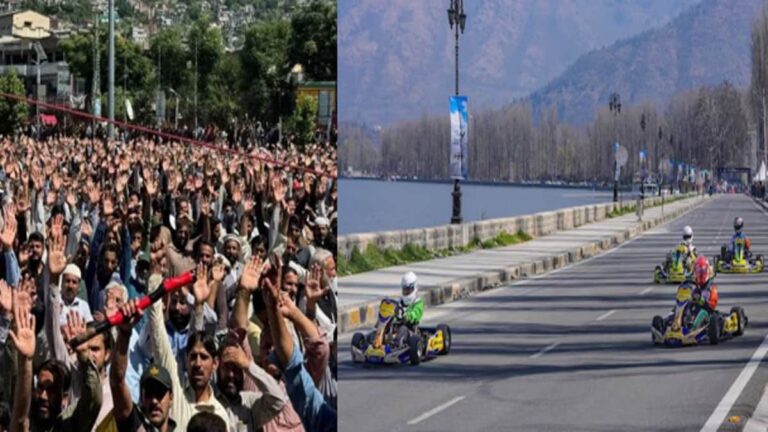New Delhi’s fiscal spending far exceeds that of Islamabad, making it impossible to compare the two regions.
Intensifying street protests across Pakistan-occupied Kashmir (PoK) have highlighted deep-rooted and growing resentment in the region, stemming from nearly 75 years of misrule by the Pakistani regime.
Pakistan’s claim of one-third of Kashmir is in fact a conundrum: the region is of great strategic importance to Pakistan, but its economic viability is questionable, as it is under-industrialized and its harsh terrain requires heavy subsidies to maintain.
In stark contrast, India controls two-thirds of Kashmir. The region is blessed with fertile valleys and towering mountains that boast unparalleled scenery. Kashmir, especially the Gilgit-Baltistan region, may boast breathtaking scenery, but its average elevation of over 15,000 feet makes it austere and unproductive.
Over the past decade, India’s strong economic growth has prompted a surge in resource allocations to the region. In contrast, Pakistan’s economy is in catastrophic decline and the country is heavily dependent on remittances from abroad. The region is desolate and lonely. In its 2022-23 budget, India allocated $23 billion for Kashmir, while Pakistan was able to spare just $1 billion.
New Delhi’s fiscal spending far exceeds Islamabad’s, making it impossible to compare the two regions. Projections for 2023-24 suggest that Kashmir’s GDP will rise by 10%, even surpassing India’s national average. Indian Kashmir has four airports compared to only two in Pakistan, and its air traffic is 12 times that of Indian Kashmir. Indian Kashmir also has almost 10 times as many hospital beds, and its inflation rate of 8% is in stark contrast to Pakistan’s 37%.
For two generations, Kashmiris in the Pakistan-occupied area have known only handouts and increasing hardship. Two crucial disparities between the states are road connectivity that facilitates the movement of goods and services, and human capital strengthened by education and vocational training.
As India continues its relentless road-building spree in Kashmir — Udhampur in Jammu is the third most heavily road-built part of the country in the past five years — the gap between the two regions is now widening beyond repair.
Moreover, Pakistani Kashmir feels it has been treated unfairly because some of its most valuable parts are controlled by proxies through the military and the Punjabi elite. There is also growing resentment over Chinese involvement, particularly in power projects that are seen as confiscation of Kashmir’s valuable assets. Efforts to industrialize Pakistani Kashmir are tainted by corruption.
The Mirpur industrial disaster in the late 90s is a classic example of how corruption and power shortages meant most industrial sites never materialized. Similarly, the Neelam-Jhelum hydroelectric project has suffered huge cost overruns and most of the electricity it generates is fed into the grid outside Kashmir, leaving the region to endure periodic blackouts.
While the advent of technology has given residents of occupied Kashmir a new perspective on the prosperity of the valley, the stark disparity in job availability and poverty compared to that of Jammu and Kashmir, one of the richest states per capita in India, has stoked greater resentment.
This is India’s chance to show off its Kashmir success. This summer, India held a Formula 4 race with the Dal Lake in Srinagar as its backdrop. As the cars sped by, dust rose in Muzaffarabad, the capital of Pakistani Kashmir. They knew they had lost the race. When the dust settled, Islamabad may face a more violent insurgency in Kashmir than it ever expected. India must play the Kashmir card well.
The author is a senior journalist with expertise in the defence field. The views expressed in the above article are the author’s alone and do not necessarily reflect the views of Firstpost.
Find us on YouTube
subscribe

